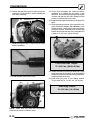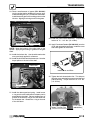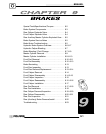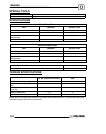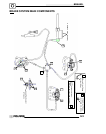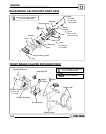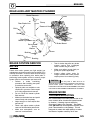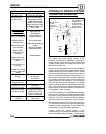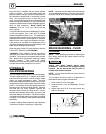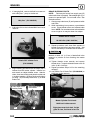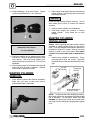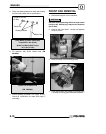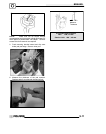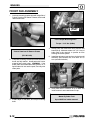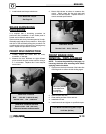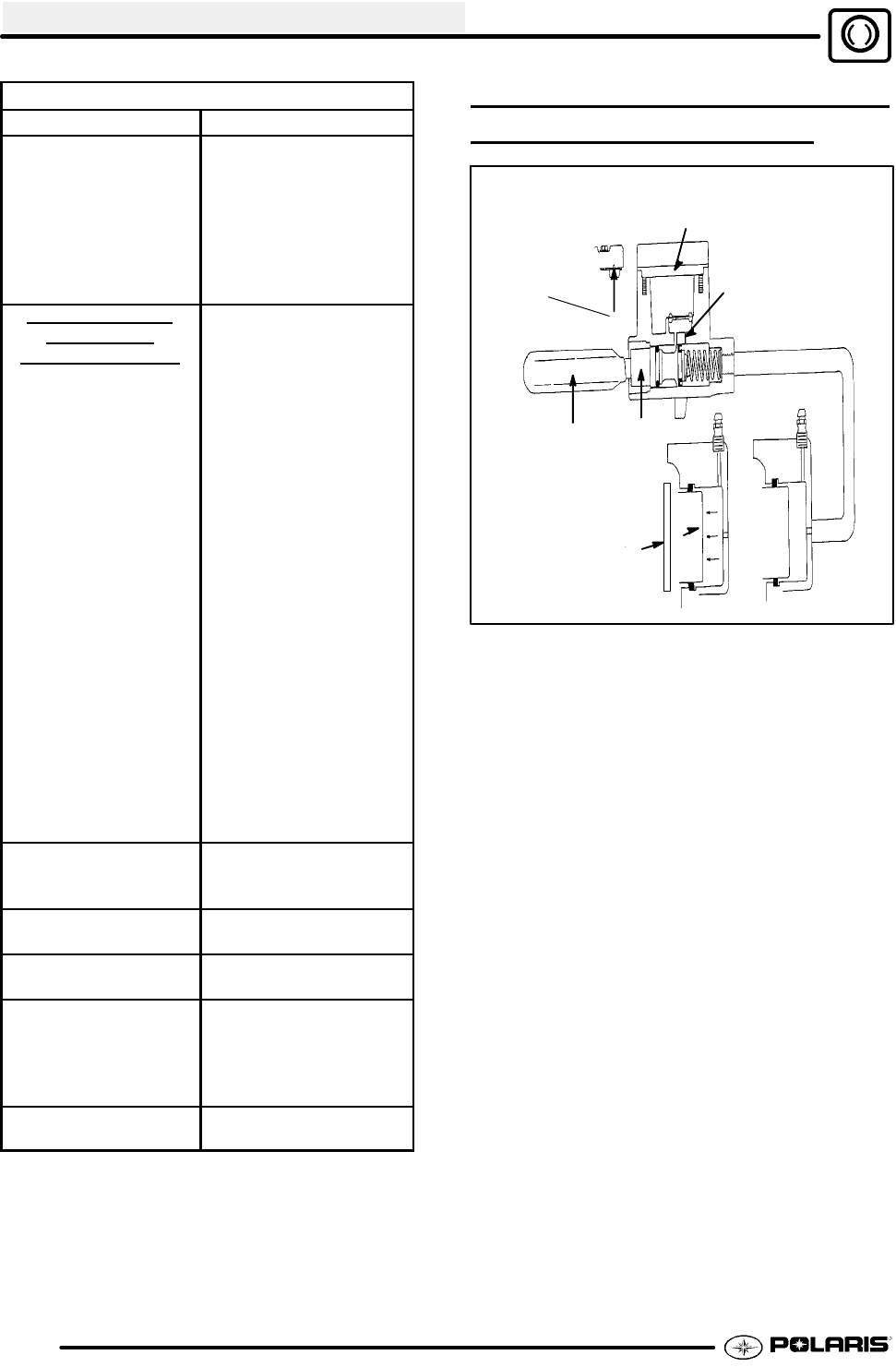
BRAKES
9.6
Brake Noise Troubleshooting
Possible Cause Remedy
Dirt, dust, or im-
bedded material
on pads or disc
Spray disc and pads
with CRC Brake Kleent
or equivalent non-flam-
mable aerosol brake
cleaner. Remove pads
and/or disc hub to clean
imbedded material from
disc or pads.
Pad(s) dragging on
disc (noise or
premature pad wear)
Improper adjustment
Insufficient lever or
pedal clearance
Master cylinder res-
ervoir overfilled
Master cylinder
compensating port
restricted
Master cylinder pis-
ton not returning com-
pletely
Caliper piston(s) not
returning
Operator error (riding
the brake / park brake
applied)
Adjust pad stop
(front calipers)
Check position of
controls & switches.
Set to proper level
Clean compensating port
Inspect.
Repair as necessary
Clean piston(s) seal
Educate operator
Loose wheel hub or
bearings
Check wheel and hub
for abnormal
movement.
Brake disc warped or
excessively worn
Replace disc
Brake disc
misaligned or loose
Inspect and repair as
necessary
Noise is from other
source (chain, axle,
hub, disc or wheel)
If noise does not
change when brake is
applied check other
sources. Inspect and
repair as necessary
Wrong pad for
conditions
Change to a softer or
harder pad
HYDRAULIC BRAKE SYSTEM
OPERATION OVER
VIEW
A
B
C
D
E
F
Must be clear
to allow
proper dia-
phragm move-
ment
Compensating port
compensates
for temperature
changes by allow-
ing fluid back to
master cylinder
Move-
able
Brake
Pad G
Typical Hydraulic Brake System
The Polaris disc brake system consists of the
following components or assemblies: brake lever;
master cylinder; hydraulic hose; brake calipers (slave
cylinder); brake pads; and brake discs, which are
secured to the drive line.
When the hand activated brake lever (A) is applied it
contacts piston (B) within the master cylinder. As the
master cylinder piston moves inward it closes a small
opening (compensating port C) within the cylinder and
starts to build pressure within the brake system. As
thepressurewithin the systemis increased, thepiston
(D) located in the brake caliper moves outward and
applies pressure to the brake pad. This pad contacts
the brake disc and moves the caliper in its floating
bracket, pulling the stationary side pad into the brake
disc. The resulting friction reduces brake disc and
vehicle speed. As the lever pressure is increased, the
braking affect is also increased.
The friction applied to the brake pads will cause the
pads to wear. As these pads wear, the piston within
the caliper moves further outward and becomes self
adjusting. Fluid from the reservoir fills the additional
area created when the caliper piston moves outward.
Brake fluid level is critical to proper system operation.
Too little fluid will allow air to enter the system and
cause the brakes to feel spongy. Too much fluid could
cause brakes to drag due to fluid expansion.
Located within the master cylinder is the
compensating port (C) which is opened and closed by
the master cylinder piston assembly. The port is open



